Anyway, below are some photos of this now-full second pond. I have also included a pic of the siphon overflow system which I had already added to the first pond over the summer. This was the first occasion that I was able to see it in action. There is also a little diagram at the end of this post which will hopefully help illustrate how the overflow/siphon system works.
This view of the second pond is from our driveway, with the first pond immediately to one's back. Notice how much driveway gravel was moved by the storm out of the driveway and deposited in the grass. I am thankful for the tractor's box blade, as it makes repairing and redressing the driveway considerably easier. Nevertheless, it is still going to require some raking by hand. Those of you who have moved gravel in this fashion already know just how slow and tedious this task can be:
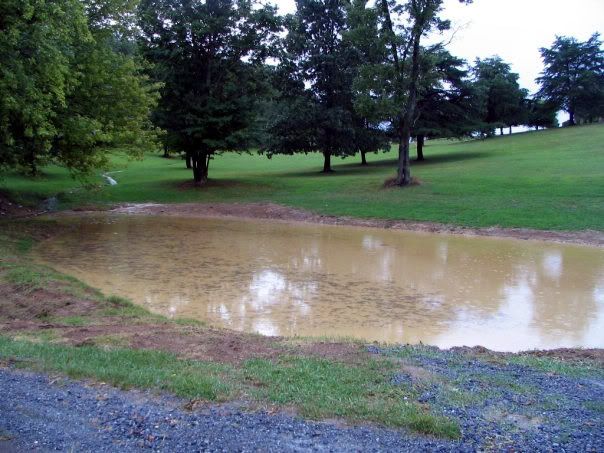
Same perspective, but back a little bit:
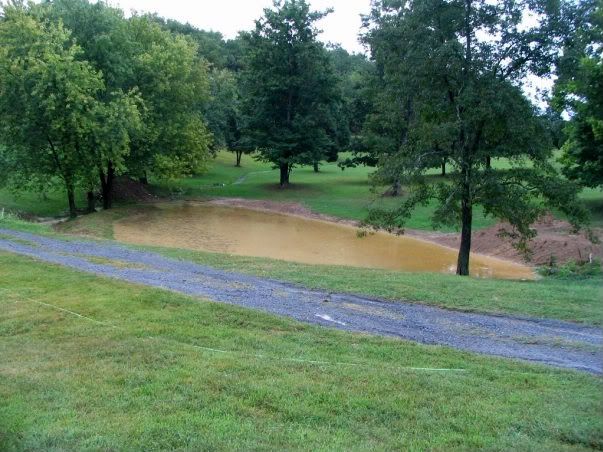
This perspective is from the opposite side of the pond looking toward the driveway. You can see the dam for the first pond in the far background:
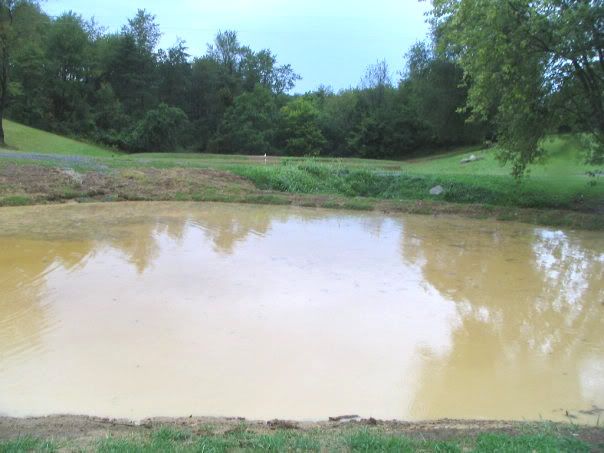
Looking toward the second pond's dam and beautiful trees gives you a sense for how high the water was:
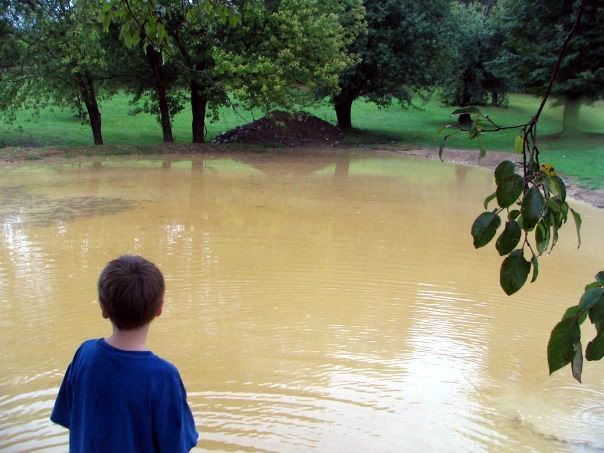
From the backside we see the flow from the surrounding watershed into the pond. You can also make out where my emergency spill-way is flowing:
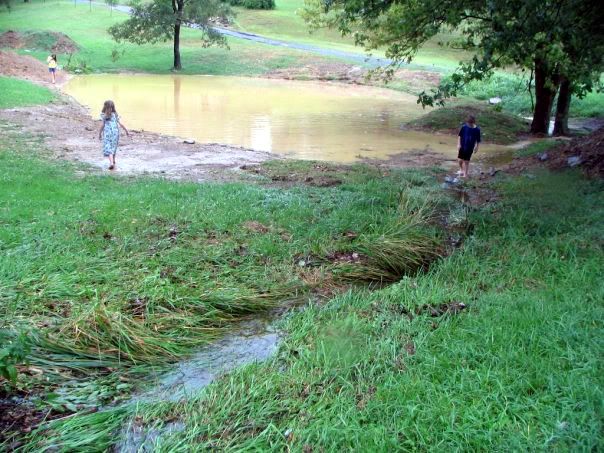
This is the siphon system I installed on the first pond. I still need to drop a pipe vertically to mark the water level I wish for a full siphon to begin. As it currently is, I was able to induce a full siphon by closing the ball valve in the pic--this action cuts off the air supply and a self-sustaining siphon process from the pond through the pipe commences. Once initiated, one could empty the whole pond if the valve were left closed:
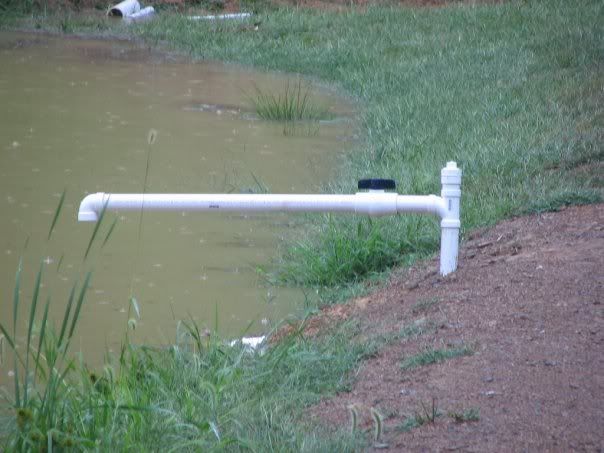
Here is the outlet of the overflow/siphon system at the base of the dam. This is the average flow rate when the water is simply passing through it without a siphon action. When I closed the ball valve and created a full siphon, the water blasted out of this 4" pipe like a torrent and went about 4 feet into the air! In the future, when the pond rises to a level which covers the (to-be-installed) vertical pipe, the air supply is blocked and a siphon begins until the pond level drops below the pipe and air is reintroduced--thus breaking the siphon:

Below is a diagram which is very similar to the siphon system I installed. I found this diagram on the Pond Boss forum and, again, it is the closest thing I have found to illustrate what I actually installed. Rather than 6" PVC, I installed 4" (the price difference is considerable), and my angles and pipe depths are different:
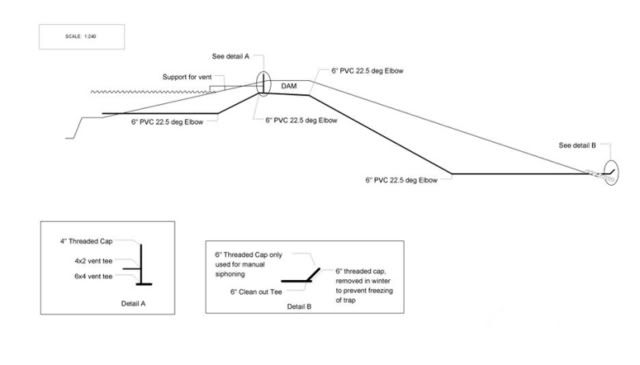
2 comments:
Nice story, i think there are lots of people who face the same situation in rainy weather, i am one of them, thanks for sharing your experience with us.
I have read out this all blog and pictures. You have done nice work to make this nice pond. I like it very much.
Post a Comment